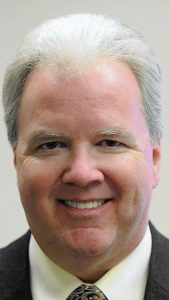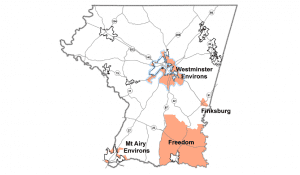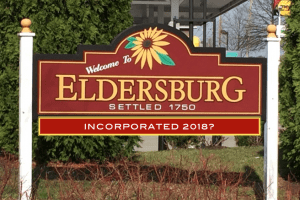
Carroll County’s Director of Planning, Phil Hager
No form of government or implementation of that form is perfect. Of course not, but Carroll County has a particular combination of problems, three of them to be precise, that are conspiring to adversely affect its development and growth.
To be clear, the problem isn’t personnel. The career staff in the government and the elected and appointed officials are good, hardworking, dedicated public servants. Some of them more effective, better at what they do than others, but individuals are not the problem. No. The problem is structural and the good news is that it can be fixed in relatively short order.
First problem: The County’s Form of Government…
Carroll is a “commissioner county.” It’s one of just three remaining in Maryland that are effectively still run by the state. The three are Garrett County which is the western-most in the state. Carroll County. And Calvert County below Anne Arundel. Every other county in the state, including Baltimore City, has “home rule.”
As a commissioner county, Carroll County has no charter, no constitution from which it derives the independence and broad-ranging local authority enjoyed, for example, by neighboring Howard, Frederick and Baltimore counties.
Carroll County has no charter, no real legislative branch and no County Executive in charge of the County’s administrative branch.
“So, what difference does that make?”
The answer is, without a charter form of government, the authority of the Board of Commissioners is limited to only those functions the state allows and, even so, according to the terms and conditions dictated by state law. Principally, we’re talking about planning and zoning. …Think about that. The Board of Commissioners’ primary means of exercising authority over the County is by controlling planning and zoning, including the approval of master and comprehensive plans. And that’s a very large part of what the Board does.
Second problem: County Control Over Planning and Zoning…

Carroll County Designated Growth Areas
The County consists of mostly agriculture land, some small towns and a number of incorporated cities, the largest of which is Westminster with 18,671 people in 2016 – plus Eldersburg. The population of Eldersburg, at 30,331 in 2010, is substantially larger than Westminster, but the really big difference is that Eldersburg is unincorporated. The County’s incorporated cities are autonomous and make their own comprehensive plans and zoning maps. Eldersburg, on the other hand, is planned and zoned by the County government. It’s the only significant place in the County that the County controls for the purposes of planning and zoning.
Think about what this means from the point of view of the County’s Planning Department. Right now, their primary objective is to plan and zone in order to grow the County’s population and tax revenues. (Carroll County population has been flat for more than a decade.) But the vast tracts of County agricultural property aren’t going to see a lot of development anytime soon. And the incorporated towns are doing their own planning and zoning. So, what does that leave? The answer is Eldersburg, the only community in the County with real growth potential that isn’t incorporated.
Third problem: The Board of Commissioners…
As a rule, people in Howard County are not adverse to development per se, as long as it occurs somewhere else. The County has five Councilmen. (All men. No women.) Doug Howard represents Eldersburg and Sykesville, while the other 4 Members of the Council represent everywhere else. So, when a vote comes up about where high density residential and aggressive, large store development should go, its understandable that four of the Commissioners are okay with it being in Eldersburg.
All together now…
Put problems 1, 2 and 3 together and you have a Planning (and Zoning) Department and Board of Commissioners whose primary job turns out to be the development of Eldersburg. That’s right, the entire County government is, in effect, conspiring to develop Eldersburg to the benefit of the entire County, but at Eldersburg’s expense. It’s not a mean or malicious thing. What choice does the Carroll County government have?
“So, if I live in Eldersburg, what can I do about it?”
The simple fact is that, without incorporation, Eldersburg is defenseless. You can attend all the hearings and other meetings you want, send emails to the Commissioners and letters to the Editor of the Carroll County Times. And you should do all those things, but the best you can hope to accomplish is influence a process of planning and zoning over which, ultimately, you have no control. Unless, of course, you incorporate.
Step 1. If you incorporate, you take control of your own planning a zoning, leaving the Board of Commissioners and County’s Planning Department with a whole lot less to do.

Step 2. You upgrade your entire County government by switching from a commissioner to a charter form of government. As the founding mothers and fathers of the new Carroll County, you help write that charter and elect your first County Executive and County Council – with brand new districts if that’s what you want to make sure Eldersburg is on equal footing with people in other communities throughout the County.
Thanks for stopping by. Please leave your comments below.
If you’re interested in reading more, here’s a link to “The Forms Of Government Task Force, Report to the Board of County Commissioners for St. Mary’s County, Maryland,” dated August 2007 when they were considering changing the form of their county government.

